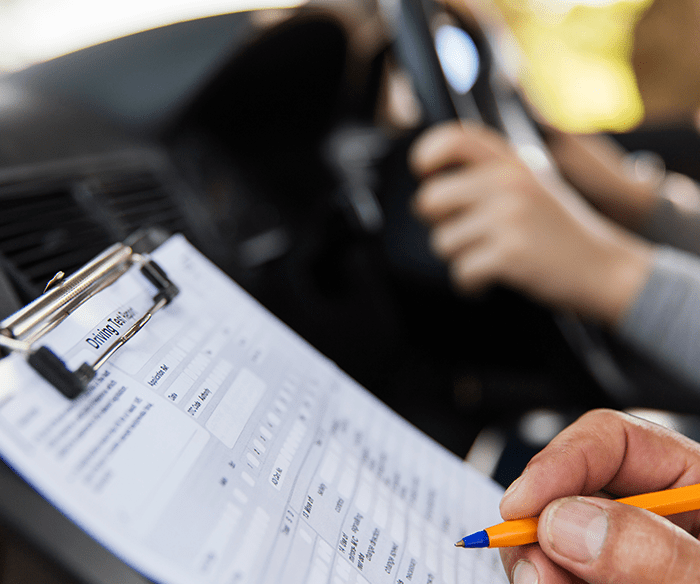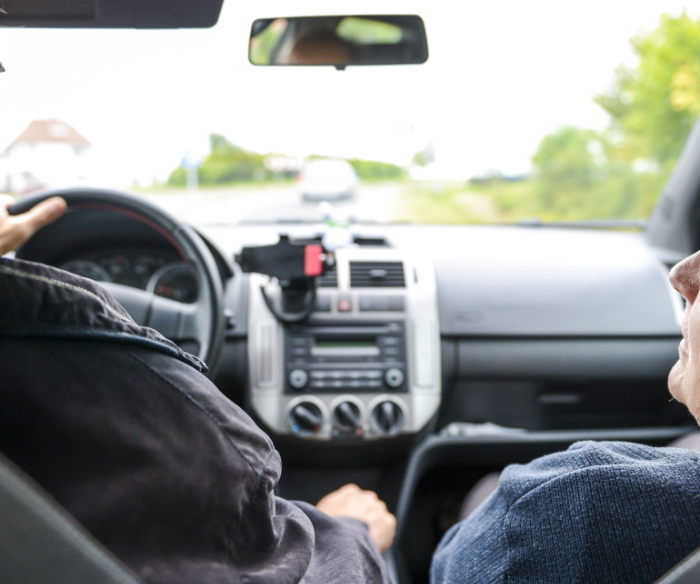According to the Insurance Information Institute, over 30,000 people die in motor vehicle accidents every year. Many of these incidents are preventable when drivers avoid unsafe practices that can put them in harm’s way. Defensive driving is proven to reduce the number of on-the-road fatalities and save lives. You can protect yourself and other individuals by learning proactive habits to become a defensive driver.
What is Defensive Driving?
Defensive driving defines driving practices that proactively prevent potential accidents. When you learn defensive driving skills, you allow yourself and other vehicles to respond to unpredictable circumstances. These techniques go far beyond common traffic law and procedure training.
When you learn to develop your driving skills by anticipating conditions and making well-informed choices, you can significantly minimize your risks while on the road. A defensive driving course teaches you to complete safe driving maneuvers by making confident choices, depending on the road and environmental conditions.
Why Defensive Driving is Important
Defensive driving is essential to public safety. Reducing accidents by avoiding potentially risky conditions helps to keep drivers safe. During their initial driving instruction, many individuals learn strategies for minimizing road hazards. Although you may have excellent reaction time, some people fail to notice all of the potential risks in a situation.
Defensive driver training aims to help you become less reactive and more proactive. Avoiding unsafe conditions reduces risk, which helps to keep motorists safe. Additionally, taking a defensive driving course can help lower your auto insurance rates, especially for teen drivers.

How to Become a Defensive Driver
Becoming a defensive driver increases your awareness of the road conditions affecting you. Despite others’ driving decisions, defensive drivers do everything possible to prevent collisions.
For example, defensive drivers slow down or pull over during a heavy rainstorm. These common-sense reactions ensure that you prioritize reaching your destination safely over getting there as quickly as possible. Below are six habits you can integrate into your driving routine to start becoming a defensive driver.
Check Your Vehicle for Road Safety
Check your vehicle periodically to ensure no underlying conditions could put you at risk for an accident on the road. Your lights, mirrors, and tires should be functioning correctly before you get behind the wheel.
Inside your vehicle, check that seat belts, head restraints, and mirrors are properly adjusted. When you turn the engine on, keep your eye out for warning lights, unusual sounds, smells, or other signals that something could be wrong with the vehicle.
Avoid Distractions
Distracted driving involves any activities that take your attention away from the road. Eating, using the phone, playing loud music, and other distractions can impact your driving skills, leading to accidents. Making an effort to pay your full attention to driving ensures you remain aware of your surroundings and respond instantly to changing conditions.
Maintain a Safe Distance
Creating space between yourself and other vehicles is essential to have the adequate reaction time necessary to avoid collisions. Depending on how fast you’re driving, you’ll want to maintain at least two seconds of distance and avoid driving in others’ blind spots. For example, if the car in front of you has to stop suddenly to avoid an obstacle in the street, keeping a safe distance will ensure you can control your vehicle before hitting them.
Scan the Road Ahead
Construction work, traffic jams, and collisions can be around any corner. Scanning the road ahead is a critical step that allows you to anticipate your next move as you approach changing road conditions. Not recognizing hazards attributes to over 40% of all driver-related collisions. Defensive driving techniques for adults avoid false assumptions about other drivers’ behaviors and other recognition errors that cause crashes.
Be Aware of Your Blind Spot
Every car has a blind spot where the driver cannot see the vehicle to their side in the other lane. Some vehicles are equipped with mirrors that allow you to see objects in your blind spot, but other cars don’t have this feature. Keep in mind that other vehicles may be in your peripheral vision, particularly before you change lanes.
Slow Down at Intersections
Intersections, particularly in downtown areas, are one of the biggest dangers to drivers. Many collisions happen within seconds of a traffic light changing color. For example, your light may have just turned green, but another driver may still be speeding through their red light. In this case, it’s critical to forego the right of way to avoid an accident.
Road Safety as a Senior
If you’re a senior driver age 55 or older, you likely have years of driving experience under your belt. A course for defensive driving techniques for seniors offers new and updated safety suggestions that refresh your skills. These courses provide information about legislative updates, vehicle maintenance, how aging affects your driving, medication use while driving, and much more.
Final Thoughts
Defensive driving means driving to save lives by putting your ego aside and proactively avoiding incidents. Making these safe driving techniques part of your daily habits will help you become a defensive driver, ensuring you arrive at your destination safe and sound. Learn more about defensive driving from the professionals at Alliance. We’re always happy to answer your questions.





